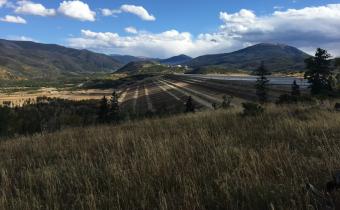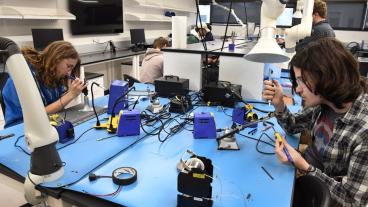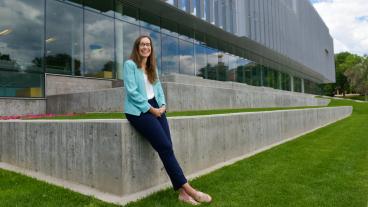Colorado School of Mines to develop mine tailings center of excellence with CSU, University of Arizona

Tailings storage facilities — like this one at the Henderson Mill in Grand County, Colorado — are not temporary and may remain in place well beyond the end of a mine’s useful life. (Photo courtesy of Priscilla Nelson)
Colorado School of Mines is joining forces with Colorado State University and the University of Arizona to develop a center of excellence dedicated to mine tailings research and education.
Officials from the three universities have signed a memorandum of understanding outlining the inter-university initiative. The center of excellence in mine tailings and waste management will focus on two main goals: the education of engineers to responsibly and sustainably manage mine tailings and the advancement of best practices in tailings management through applied science and engineering research.
Mine tailings are the waste solids that remain after valuable minerals are separated from an ore deposit’s remaining minerals, or gangue. Typically, these residuals are discharged as a slurry composed of finely ground gangue (from sub-micrometer to sand-size particles), chemicals and process water. That slurry is placed into a tailings storage facility (TSF), where solids then slowly separate from water under gravity. TSFs are not temporary and may remain in place well beyond the end of a mine’s useful life.
“The mining industry is extremely concerned about the management of tailings, especially as companies increasingly rely on large-scale extraction of ever-lower grade ore deposits, a process that yields large volumes of waste materials,” said Priscilla Nelson, professor of mining engineering at Colorado School of Mines. “We hope that this center of excellence will serve as a center for coordination for all the international efforts that are going on in tailings management. Finding ways to sustainably manage tailings is a matter of social and corporate responsibility.”
Recent high-profile tailings incidents have made the center’s proposed work all the more important. The Brumadinho dam disaster in 2019, in which a tailings dam at Brazil’s Córrego do Feijão iron ore mine suffered a catastrophic failure and buried more than 150 people while contaminating a stretch of about 70 kilometers downstream, brought the issue to global attention: Tailings dams fail at a rate about 10 times higher than comparable water storage embankments, creating concerns about the continued viability and acceptability of the structures and the need for more research in complex soil and tailings mechanics.
“The center is going to be interested in not just the safe disposal of mine tailings but also what we can do with the tailings that represent new products. We have a group that’s planning a project to melt tailings and pull glass fiber that could be used in all sorts of applications,” Nelson said. “The idea of creating downstream projects would bring the mining industry more strongly into the global circular economy.”
Among the center’s priorities are to:
- Offer online and in-person short courses and workshops in tailings management for current mining professionals and engineers, as well as inter-university certificates in relevant areas of tailings and waste management
- Serve as a nexus for the dissemination of best practices and industry benchmarks
- Provide venues for graduate education focused on mine waste to support the development of uniquely qualified tailings engineers
- Conduct fundamental and near-term research guided by industry needs
All three institutions participating in the center have strong reputations and complementary expertise in the field of mine waste management. Mines and Arizona are home to world-class programs in mining engineering, and the premier international conference on the subject, the Tailings & Mine Waste Conference, was founded by CSU in 1978 and continues to be held there every other year.
“Mining is key to meeting the need for resources with the immense demands of growing renewable energy and the tech industry. With this growth comes the need to manage tailings in an environmentally sound and sustainable way,” said John Bradford, vice provost for global initiatives and dean of earth resource and environmental programs at Mines. “This center is a great example of Mines being responsive to the needs of society and industry.”




